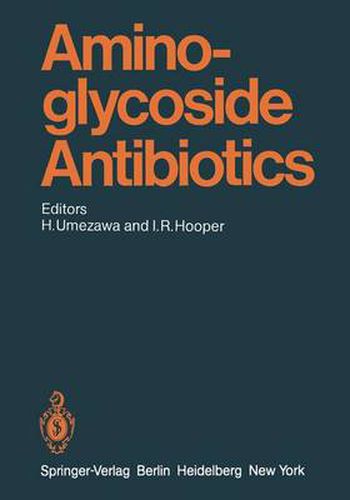Readings Newsletter
Become a Readings Member to make your shopping experience even easier.
Sign in or sign up for free!
You’re not far away from qualifying for FREE standard shipping within Australia
You’ve qualified for FREE standard shipping within Australia
The cart is loading…






This title is printed to order. This book may have been self-published. If so, we cannot guarantee the quality of the content. In the main most books will have gone through the editing process however some may not. We therefore suggest that you be aware of this before ordering this book. If in doubt check either the author or publisher’s details as we are unable to accept any returns unless they are faulty. Please contact us if you have any questions.
The first useful antibiotic found by screening was streptomycin. The late Prof. WAKSMAN started screening for antibacterial antibiotics in 1940 and, after finding actinomycin in 1941, he and his collaborators discovered streptomycin in 1944. This antibiotic made a great contribution in saving human lives from tuberculosis and acute serious infections. About 1957, after wide usage of such antibiotics as penicillin, streptomycin, chloramphenicol, tetracycline, and erythromycin, staphy- lococci and Gram negative organisms resistant to all or most antibiotic drugs ap- peared in hospital patients. The origin and treatment of such resistant strains be- came a major topic of investigation. At that time, kanamycin was discovered and used in the treatment of resistant infections. It may be said that the appearance of resistant strains stimulated a resurgence of research on new antibacterial antibiot- ics and their derivatives. In 1965, kanamycin-resistant strains were found in hospital patients and, undertaking the study of the mechanisms of resistance, I found that resistant strains produce intracellular enzymes that can transfer either the terminal phos- phate of ATP or the acetate of acetyl-CoA to the 3’ -hydroxyl or the 6’ -amino group of 2-deoxystreptamine~containing antibiotics. These results, reported in 1967, made it possible to design new synthetic derivatives that would inhibit the growth of kanamycin resistant strains of microorganisms. Thus, a new research area was opened: the development of aminoglycosides useful in the treatment of drug-resis- tant infections.
$9.00 standard shipping within Australia
FREE standard shipping within Australia for orders over $100.00
Express & International shipping calculated at checkout
This title is printed to order. This book may have been self-published. If so, we cannot guarantee the quality of the content. In the main most books will have gone through the editing process however some may not. We therefore suggest that you be aware of this before ordering this book. If in doubt check either the author or publisher’s details as we are unable to accept any returns unless they are faulty. Please contact us if you have any questions.
The first useful antibiotic found by screening was streptomycin. The late Prof. WAKSMAN started screening for antibacterial antibiotics in 1940 and, after finding actinomycin in 1941, he and his collaborators discovered streptomycin in 1944. This antibiotic made a great contribution in saving human lives from tuberculosis and acute serious infections. About 1957, after wide usage of such antibiotics as penicillin, streptomycin, chloramphenicol, tetracycline, and erythromycin, staphy- lococci and Gram negative organisms resistant to all or most antibiotic drugs ap- peared in hospital patients. The origin and treatment of such resistant strains be- came a major topic of investigation. At that time, kanamycin was discovered and used in the treatment of resistant infections. It may be said that the appearance of resistant strains stimulated a resurgence of research on new antibacterial antibiot- ics and their derivatives. In 1965, kanamycin-resistant strains were found in hospital patients and, undertaking the study of the mechanisms of resistance, I found that resistant strains produce intracellular enzymes that can transfer either the terminal phos- phate of ATP or the acetate of acetyl-CoA to the 3’ -hydroxyl or the 6’ -amino group of 2-deoxystreptamine~containing antibiotics. These results, reported in 1967, made it possible to design new synthetic derivatives that would inhibit the growth of kanamycin resistant strains of microorganisms. Thus, a new research area was opened: the development of aminoglycosides useful in the treatment of drug-resis- tant infections.